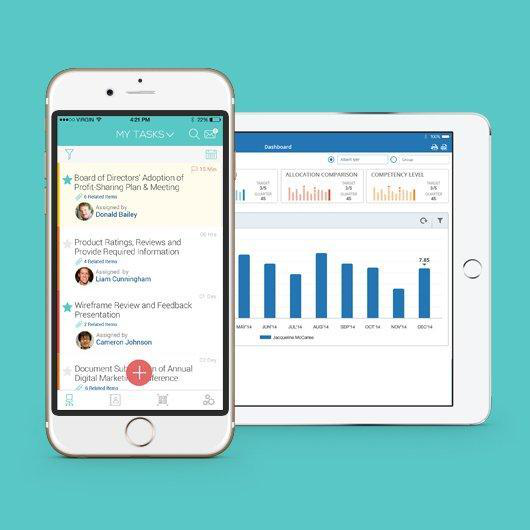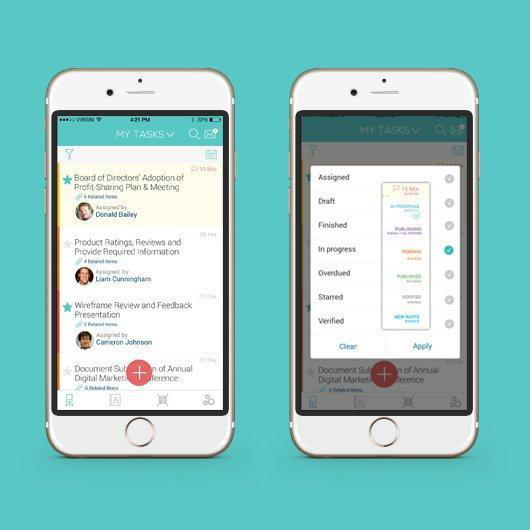The rapidly evolving business landscape has been bringing new challenges in front of today’s digital leaders to deliver digital solutions that can engage customers and with a faster time to market. One such challenge is to build Enterprise apps.
Building a scalable enterprise mobile app is not an easy undertaking, especially, if you want to ensure a great user experience with minimal blockages in the flow of information. Apps that are designed to be used in a corporate or professional environment are bound to be built with a special strategy.
Any quality enterprise app needs to be scalable, complex, mission-critical, and distributed amongst a number of users. Apps can be an exceptional choice for bringing a team or a organization together for a common project or cause; in fact, even for keeping everyone abreast of the daily progress so that everyone is on the same page.. With such benefits, the demand for quality enterprise apps have increased considerably in recent years.
However, as an increasing number of organizations and business setups head to adopt enterprise mobility apps, there are a host of challenges that stare at them. Let’s look at these very challenges faced by those looking to capture a large use base with enterprise mobile apps.
Deploying Applications to Large Numbers of Users
This is one of the biggest issues currently facing the design and development of enterprise apps. The users of the app in your case are asymmetrical i.e., accessing the app from a number of different devices.
On the other hand, narrowing the app down to a single platform – a smart phone, for this particular example – does not do much to eliminate the difficulties of proper deployment and integration.
This is because there are different types of smart phones with various hardware and software requirements, and a quality enterprise mobile app must be designed to be used by the majority of enterprise users (or, at the very least, the majority of users that they need, in relation to the project at hand).
As for example, Android phones are different from iOS phones, and what works for one, might not be a usable functionality the other. In reality, of course, narrowing down an enterprise app to a single platform is not always possible.
Many a time, these apps need to be developed for desktops as well as mobile devices. This increases the complexity as the app need to be deployed for large numbers of employees and it needs to work well for everyone.
Ensuring Data Security
These apps are designed for use within a business and most businesses have some kind of data that is considered confidential.
Even if a particular enterprise app is not designed to directly handle that information, it could easily become a gateway for those with more sinister intent should it not be developed in a way that promotes security.
Here are few ways to inculcate such practices in your Ensuring Data Security enterprise mobile app strategy
- Ensure that the authentication process of an app is as secure as possible. This is because users would be keying-in their personal information and credentials here. Therefore, if the process is not secure, and an unauthorized user is able to gain access to the information provided, then the amount of damage they can do would be severe.
- It is necessary that validation be conducted on the server side of the process rather than on the client side. Doing so will help improve the user experience by not bogging down the application itself and causing it to run slowly.
- Encryption is another way to achieve data security. It helps in the addition of an protective extra layer to all the data sent through the apps.
Selecting The Right Development Platform and Technology
It is imperative to choose the right development platform as well as technology. any failure to do so, is likely to result in loss of clientele, and can even lead to a situation wherein you may have to redesign the app from scratch.
This is also neither time nor cost efficient, which means that developers could end up spending more than the required time working on it.
Xamarin, for example, is best suited to build cross-platform mobile applications and offers similar performance as native applications. This kind of development platform is more flexible than a native platform, and it is compatible with most devices.
When the aim is to develop an app for a variety of users that access a variety of devices, (especially as employees use work devices as well as personal devices to access these apps) Xamarin is the way to go.
Building The Most Suitable User Interface
An enterprise app must be designed and optimized to give the best user experience possible. Keep in mind that an app is not meant necessarily to inform, but rather to be used to create something.
That changes the way the enterprise apps are designed, and it changes the way users will engage with the product. To find the best possible user interface for your users, it is important to understand
- What they are looking for
- What kind of app do they need
- Why are they investing in one
Once you have understood these requirements, you will find it relatively easy to create a useful and easy-to-use interface.
Choosing The Right Middle ware for Integration with Mobiles
It is imperative for any business to have automated systems to handle various processes such as human resource departments, communications, asset management and more.
As each of these systems cannot interact directly with the mobile devices and neither can they interact in a uniform manner, therefore, the need for using a middle ware arises.
With the help of a middle ware, inputs from various isolated systems are brought together at one place. Theses inputs are then encoded into a language for mobile devices.
The next question, however, is which middle ware is apt for your app. This happens because the larger is the size of the business, the more complex its individual systems are likely to be!
Conclusion
When designing an enterprise app, it is even more important to recognize some of the common challenges that might need to be overcome.
This includes designing a usable interface, ensuring data security, understanding how to implement and deploy the app to many users, and selecting the right mobile app development platform to ensure maximum scalability.
With mobile-first technology on the go, there is an increase in demand for mobile apps. Given that, developers have to improvise on building and scaling mobile apps for all platforms rather than resorting to conventional methods.
Building Enterprise Apps at a scale is a challenge for any organization. But once you figure out the key factors that goes on to build high performance scalable enterprise apps, you could build them with a faster turnaround.




